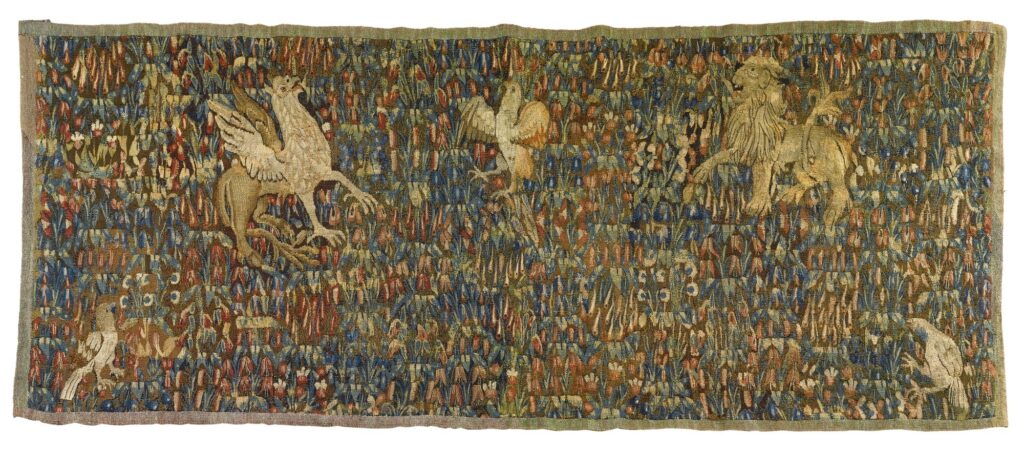Franco-Flemish master
Flanders, 2nd quarter 16th century
The millefleur tapestry
Circa 1500
Polychrome wool weft, cotton warp, 201.9 х 86.4 cm
The millefleur tapestry design, patterns incorporating numerous small flowers across a solid ground, developed in the mid-15th century and remained popular throughout the mid-16th century. More elaborate examples interspersed with figures or animals were immensely popular.
In the late medieval period of the fifteenth century the now famous millefleurs style tapestries appeared, which were characterized by their backgrounds being made of hundreds of tiny flowers. The word millefleurs is French for “a thousand flowers” and as a background for a tapestry flowers were considered the height of fashion and sophistication. Developed from the iconography of the paradise garden, the flower meadow motif soon separated from its original sacred context. The verdure tapestries made for Philippe le Bon, Duke of Burgundy, in 1466 are thought to have provided the initial impetus for these new secular designs. An eight-piece ensemble from this series has survived and is kept in the Historisches Museum Bern. The impressive work depicts 30 identifiable species of flowers, as well as including the Duke’s coat-of-arms and the flints of the Order of the Golden Fleece throughout the design. The most famous millefleurs tapestries are probably the enigmatic Unicorn Tapestries kept in the Musée de Cluny in Paris, dated to the late 15th century. These pieces derive much of their aesthetic appeal from their unusual red ground and subtle depiction of women’s life at court.
The present millefleur tapestry contains the images of griffon and heraldic lion alongside with the image of birds that had symbolic meaning. For example, the lion is the King of beasts is both strong and courageous. A mythical hybrid between a lion and an eagle, the griffin was believed to carry away full-grown men to feed its young. Alongside with the lion the griffin is considered as an other supreme animal.
Condition report:
The artwork is in good condition.
Provenance:
Private collection, New York
Private collection, Zurich
Bibliography:
Further comparable tapestries in the Musée Cluny, Musée national de Moyen Âge Paris and in Château de Langeais / Loire.
A similar fragment in the Rijksmuseum Amsterdam inv. BK-1755 (Hartkamp-Jonxis/Smit, European Tapestries in the Rijksmuseum, Zwolle-Amsterdam 2004, no. 20).


